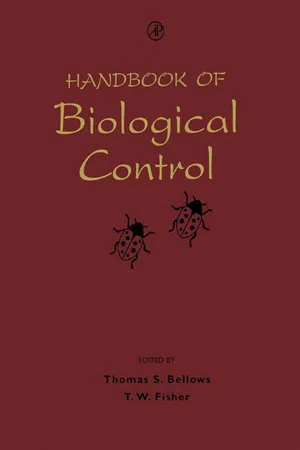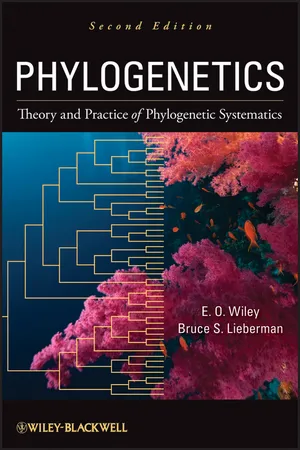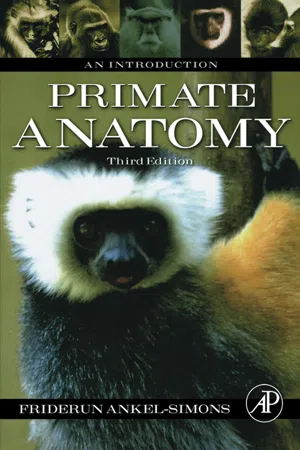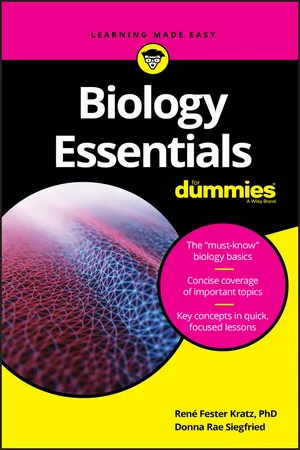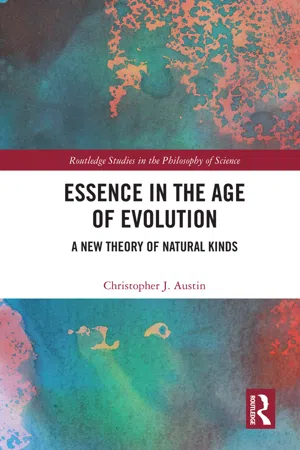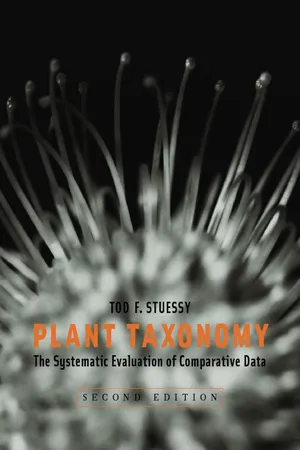Biological Sciences
Taxonomy
Taxonomy is the science of classifying and naming organisms based on their characteristics and evolutionary relationships. It involves organizing species into hierarchical categories, such as kingdom, phylum, class, order, family, genus, and species. Taxonomy helps scientists understand the diversity of life and how different organisms are related to each other.
Written by Perlego with AI-assistance
Related key terms
Related key terms
1 of 4
Related key terms
1 of 3
9 Key excerpts on "Taxonomy"
- eBook - ePub
Handbook of Biological Control
Principles and Applications of Biological Control
- T. W. Fisher, Thomas S. Bellows, L. E. Caltagirone, D. L. Dahlsten, Carl B. Huffaker, G. Gordh(Authors)
- 1999(Publication Date)
- Academic Press(Publisher)
In the following chapter, we develop lines of reasoning intended to show the importance of Taxonomy to biological control and illustrate instances where taxonomic work has been vital in the success or occasionally responsible for the failure, of biological control programs. We delineate areas of responsibility in collaboration between biological control workers and taxonomists. Finally, we note the importance of voucher specimens to the future success of biological control programs; and the collation of biological information about hosts, prey, and their natural enemies.Taxonomy: THE HISTORICAL PERSPECTIVE
Taxonomy has a pervasive influence on all human activities. The urge to arrange, organize, describe, name, and classify seems fundamental. This urge operates at all levels of social organization, from the alphabetical arrangement of family names in the telephone directory to the development of legends for street maps. In a very real sense, a world without organization cannot be imagined. These efforts at organization, protracted over time, have been called Taxonomy or systematics. In biology, Taxonomy is the branch that deals with the description of new taxa and the identification of taxa known to science. Classification involves the arrangement of taxa based on morphological and biological characteristics.Beginning with the ancient civilizations, names have been applied to organisms. Insects were apparently among the objects of naming because Beelzebub, of biblical reference, was (among other things) “lord of the flies.” These so-called “common” names of many organisms are in widespread usage today, thus testifying to the utility of such a practice. Despite the usefulness of common names to the layman, several problems are inherent in common names. Most serious of these problems is synonymy. Frequently, more than one common name is applied to a single organism (synonyms), or the same common name is used for different organisms (homonyms). Synonymy has created confusion and misunderstanding because the biological characteristics and habits of similar organisms can be profoundly different.In its earliest form, the scientific name given to an organism was often impractical and unwieldy. Scientific names during the lifetime of John Ray (= Wray) (1628 to 1705) consisted of a series of Latin adjectives catenated in such a way as to describe the animal. The system was less ambiguous than the common name system, but it had the problem of being cumbersome because the name of an animal frequently was several lines or a paragraph long. Thus, to mention the scientific name of an animal in conversation required an excellent memory and plenty of time. - eBook - ePub
This Is Biology
The Science of the Living World
- Ernst Mayr(Author)
- 1998(Publication Date)
- Belknap Press(Publisher)
Our knowledge of the diversity of life has been growing exponentially during the last 300 years. It began with the voyages of exploration and the work of individual explorers, whose recorded observations and collections revealed differences in the faunas and floras of every new continent and island explored. Next came the study of freshwater and ocean organisms, including those in the deep sea, which revealed another dimension of biodiversity. The investigation of microscopic plants and animals, parasites, and fossil remains has acquainted us still further with uniqueness in the earth’s biota. Finally came the discovery and scientific study of the prokaryotes (bacteria and their relatives), both living and fossil. The particular field of research whose task it became to describe and classify this vast diversity of nature is called Taxonomy.After an initial burst of interest in classification by Aristotle and Theophrastus around 330 BC , Taxonomy experienced a long decline until the Renaissance. The field had a second great flowering through the work of Linnaeus (1707–1778), followed by another decline that was halted only when Darwin published his Origin of Species in 1859.1 This work was essentially the result of taxonomic research, and Taxonomy has continued to play an important role in the development of evolutionary theory, providing the basis for the biological species concept and for major theories of speciation and of macroevolution (see below).Realizing that the task of studying biodiversity is greater than mere description and inventory-taking, Simpson suggested that the term “Taxonomy” should be restricted to the traditional aspects of classifying, while the term “systematics” should be applied to “the scientific study of the kinds and diversity of organisms, and of any and all relationships among them.” Systematics thus was conceived as the science of diversity, and this new broadened concept has been widely adopted by biologists.2Systematics includes not only identification and classification of organisms but also the comparative study of all characteristics of species as well as an interpretation of the role of lower and higher taxa in the economy of nature and in evolutionary history. Many branches of biology depend entirely on systematics; this includes biogeography, cytogenetics, biological oceanography, stratigraphy, and certain areas in molecular biology.3 It is a synthesis of many kinds of knowledge, theory, and method applied to all aspects of classification. The ultimate task of the systematist is not merely to describe the diversity of the living world but also to contribute to its understanding.4 - eBook - ePub
- Matthew J Colloff(Author)
- 2009(Publication Date)
- CSIRO PUBLISHING(Publisher)
1. Identification and Taxonomy, classification and phylogeny
The main service which the present day world expects of its systematists remains . . . the speedy and reliable identification of organisms. R.A. Crowson, 1970Richard Fortey, 1997Discrimination and identification have value beyond the obvious separation of edible from poisonous, valuable from worthless, or safe from dangerous. This is a means to gain an appreciation of the richness of the environment and our human place within it . . . We start to understand our history by seeking to collect and classify.1.1 What is the use of Taxonomy?
The subclass Acari – the mites – contains about 45 000 species that have been formally named and described. This is a small percentage of the total global diversity of mites, estimated to be between 540 000 and 1 132 000 species (Walter and Proctor, 1999 ), making it the most diverse group of arthropods after the insects. The science dealing with the study of mites is called Acarology. To make sense of the enormous diversity of living organisms a system of description and ordering is required.Taxonomy (literally, the naming of taxa, or groups of phylogenetically related organisms – subspecies, species, genera, families and so forth: see Table 1.1 ) is the science that deals with the recognition, description and defining of organisms. It involves providing taxa with an ‘identity’ that allows them to be recognised, hopefully in a reliable and repeatable manner. For practical purposes, the identity of a species is defined by comparing it with related species and by characters that are unique to that taxon. In the majority of animal taxa, and especially arthropods, such characters have been mostly morphological ones because traditionally the vast bulk of taxonomic work was done using dead specimens from museum collections. However, characters based on behaviour, ecology, biochemistry, gene sequences, protein characteristics and biogeography are also used by taxonomists to great effect. Nevertheless, most newly described species are defined by morphological differences between themselves and previously described species, and are referred to as morphospecies. The morphospecies represent the taxonomist’s ‘first cut’ in terms of accuracy of definition. A single morphospecies may, on closer investigation through the comparison of different populations of that morphospecies, turn out to contain several biological species, not separable by morphological differences but with unique characters of behaviour and biology and, if sexually reproducing rather than parthenogenetic, only capable of producing fertile offspring by mating with other members of the same biological species. So, the definition of species at a higher resolution than morphospecies requires the taxonomist to make detailed observations on the life history and biology of live populations. An example of such a study on dust mites is that showing a lack of interbreeding of populations of Dermatophagoides farinae and D. microceras by Griffiths and Cunnington (1971) - eBook - ePub
Phylogenetics
Theory and Practice of Phylogenetic Systematics
- E. O. Wiley, Bruce S. Lieberman(Authors)
- 2011(Publication Date)
- Wiley-Blackwell(Publisher)
8 PHYLOGENETIC CLASSIFICATIONAcademic Taxonomy deals with classes; it merely arranges according to similarities; while natural Taxonomy arranges according to kinships determined by generation. —Kant, 1775; quoted in Dobzhansky (1962:93) [A]ll true classification is genealogical. —Charles Darwin (1859:420)Classifications are systems of names organized to show relationships among the entities named. The names derive their meaning from the intent of the persons who are trying to communicate. Biological classifications are used to convey ideas of the relationships among organisms. Technically, biological classifications are not classifications at all because taxa are not classes. Thus, Griffiths (1974) prefers systematization and de Queiroz (1988) has suggested that confusion over classification as opposed to systematization inhibited the spread of phylogenetic classifications between the time of Darwin and Hennig. However correct systematization might be, the term has not caught on, and we may be stuck with an inappropriate term (classification ) based on common usage. Still, we have no problem with the term phylogenetic systematization , although we will refer to it as phylogenetic classification .Phylogenetic classifications are biological classifications that meet the minimum criteria of being a system of names that imply relationships that are logically consistent with the phylogenetic tree the classification references. Differences between phylogenetic classifications of the same organisms may come from two sources. First, phylogenetic classifications may differ because they adopt different conventions for showing relationships, e.g., a classification that names each branch as compared to a classification that uses a listing convention, as described below. Or they may differ because one uses Linnean conventions and another uses numerical prefixes or Phylocode conventions. Second, they may differ because the reference phylogeny is different. In the first case, we can think of the classifications as different ways of communicating about the same idea. In the second case, there are disagreements about the underlying relationships. Differences of the second kind are biologically important as they denote differences in the empirical data or the interpretation of the empirical data. Differences of the first kind are a matter of conventions adopted. - eBook - ePub
Language Change and Nineteenth-Century Science
New Words, New Worlds
- Catherine Watts(Author)
- 2023(Publication Date)
- Routledge(Publisher)
His system was based upon a universal Latin-based scientific language, which united scientists across the world (Hobhouse, 2004 : 195), thereby enabling and promoting more efficient global scientific communication. Linnaean Taxonomy involves grouping each species according to shared physical characteristics and results in a hierarchical system whereby each kingdom is broken down until each species can be separately classified under one of the following: kingdom; phylum; class; order; family; genus; species. The scientific name of an organism is generated from its genus and species. Thus, modern humans are classified as Homo sapiens, with Homo being the genus name and sapiens the specific epithet. This classification derives from classical Latin meaning ‘wise or rational person’, with homō meaning ‘human being or person’ and the adjective sapiens meaning ‘wise’. This is the basis upon which modern scientific Taxonomy builds, although the Linnaean system has since been revised to improve consistency with the Darwinian principle of common descent (see Chapter 6), as well as with modern developments in DNA gene sequencing. Taxonomy is an integral part of biological nomenclature and it is never used in a translated form but always in Latin. Indeed, translations of the Latin nomenclature deliver some curious examples, such as the green oak moth (Tortrix viridana) translating as ‘the twisted woman living among the green’ and the harvestman spider (Mitopus morio) meaning ‘thread-foot fool’ (Savory, 1953 : 139). It is also common practice to write the genus name starting with a capital letter and to put the whole phrase in italics (or sometimes to underline it) - eBook - ePub
Primate Anatomy
An Introduction
- Friderun Ankel-Simons(Author)
- 2010(Publication Date)
- Academic Press(Publisher)
Chapter 2Taxonomy
Publisher Summary
This chapter provides a brief overview of classification of animals and plants. The essence of classification is to order all living things into groups that not only resemble each other but are also related to each other by evolution through time. This ordering allows scientists in all fields to communicate effectively with one another about the natural world in which we all live. The classification methodology should be stable to support widespread understanding. In a commonly used classification system, all known living organisms are grouped into five kingdoms—Monera, Protista, Fungi, Plantae, and Animalia. These kingdoms are ordered into smaller categories, namely, into phyla, classes, orders, families, genera, and species. Species that are defined according to similarity are called morphological species. At present, three discrete methodologies of classification are recognized—traditional or evolutionary classification—this kind of classification begins with the assessment of overall morphological similarity between organisms. Similarities are tested for patterns of homologies in living organisms and, if possible, are compared with fossil forms; numerical or phenetic Taxonomy—numerical Taxonomy essentially depends on equal weighting of all phenetic characters and it totally rejects phylogenetic implications because phylogenetic events are considered to be scientifically unverifiable; and cladistics—the taxonomic method of cladistics is based on the claim for objectivity as numerical phenetic classification.Hierarchical Classification Population Biology and ClassificationTraditional (or Evolutionary) Classification Numerical (or Phenetic) Taxonomy CladisticsMisunderstandings in Primate Classification The Tarsier ConundrumHuman minds are constantly trying to rank or sort out all that surrounds them. Animate as well as inanimate objects are always consciously or unconsciously classified. Humans among themselves are also constantly judged and sorted—within and between groups—and consequently we could say that appraising others and the world around us is part of the human condition. Thus, it appears that human beings have classifying minds. Classification involves all aspects of daily life, even though it is disguised by different names: decision making, selection, planning, pigeonholing, discriminating, and judging are some of the terms that describe classifying endeavors. - eBook - ePub
- Rene Fester Kratz, Donna Rae Siegfried(Authors)
- 2019(Publication Date)
- For Dummies(Publisher)
Characteristics that organisms have in common are called shared characteristics. Based on structural, cellular, biochemical, and genetic characteristics, biologists can classify life on Earth into groups that reflect the evolutionary history of the planet. That history indicates that all life on Earth began from one original universal ancestor after the Earth formed 4.5 billion years ago. All the diversity of life that exists today is related because it’s descended from that original ancestor. Organizing Life into Smaller and Smaller Groups: Taxonomy Biologists need to work with small groups of living things in order to determine how similar the different types of organisms are. Hence, the creation of the taxonomic hierarchy, a naming system that ranks organisms by their evolutionary relationships. Within this hierarchy, living things are organized from the largest, most-inclusive group down to the smallest, least-inclusive group. The taxonomic hierarchy is as follows, from largest to smallest. Domain: Domains group organisms by fundamental characteristics such as cell structure and chemistry. For example, organisms in domain Eukarya are separated from those in the Bacteria and Archaea domains based on whether their cells have a nucleus, the types of molecules found in the cell wall and membrane, and how they go about protein synthesis. (We introduce the three domains in the earlier section “Meet Your Neighbors: Looking at Life on Earth.”) Kingdom: Kingdoms group organisms based on developmental characteristics and nutritional strategy. For example, organisms in the animal kingdom (Animalia) are separated from those in the plant kingdom (Plantae) because of differences in the early development of these organisms and the fact that plants make their own food by photosynthesis, whereas animals ingest their food - eBook - ePub
Essence in the Age of Evolution
A New Theory of Natural Kinds
- Christopher J. Austin(Author)
- 2018(Publication Date)
- Routledge(Publisher)
In this by now familiar schema, organisms are broadly categorised by a hierarchical series of taxonomical ranks which reflect distinct degrees of classificatory precision (from the ‘Domain’ to the ‘Species’). On this framework, groups of organisms are catalogued according to their unique taxonomical rank values: human beings, for instance, are a collection of organisms which are distinguished by their belonging to the Kingdom of animalia, the Class of mammalian, the Genus of homo, and the Species of homo sapiens. Given that this classificatory framework ultimately derives from the writings of Aristotle—the rightly regarded “father of biological Taxonomy”—a natural question for the defender of a neo-Aristotelian form of biological natural kind essentialism is whether any of these ranks (Kingdom, Family, Genus, Species, etc.) demarcate genuine ontological divisions whereat nature is “carved at the joints”. 2 Prima facie, the advocates of that theory will want not want to be overly permissive here—a theory according to which every taxonomic rank equally satisfies the criteria for being ‘natural’ in this sense, for instance, seems rather unattractive; even Linnaeus, after all, considered the majority of those ranks to be merely heuristically advantageous conceptual artefacts and countenanced only the Genus and Species ranks as truly “God-given”. 3 Importantly, however, the precepts of that theory (as described in Chapter 1) provide its advocates with a restrictive principle in this respect: any taxonomic rank which genuinely corresponds to a way in which the denizens of the biological world are mind-independently divvied up must contain natural kinds whose members’ common possession of a set of causal mechanisms ground the shared generative specificities of their morphological profiles - eBook - ePub
Plant Taxonomy
The Systematic Evaluation of Comparative Data
- Tod Stuessy(Author)
- 2009(Publication Date)
- Columbia University Press(Publisher)
absolute means currently exist for the definition of categories in the Linnaean hierarchy. Furthermore, not all botanical taxonomists would define the categories in the same way. In fact, if asked to give criteria to circumscribe each of the commonly employed units, ten different systematists would probably give ten slightly different answers. It is also true that categories in different divisions (or even classes or orders) are not always comparable in terms of such variables as numbers of species, numbers of individuals, or phenotypic and genotypic diversity (Van Valen 1973). Despite these variations, much similarity of definition would prevail, and it is this similarity that is emphasized in this book. In the following sections, in addition to discussions of the current definitions of categories, the history of the botanical usage of each category is discussed briefly.1 DuPraw (1964, 1965) advocated nonhierarchical classifications, i.e., ordinations, but despite considerable utility, these do not provide the needed aspects of communication and predictive characteristics of classes that result from hierarchical classification. Jancey (1977) stressed the utility of hyperspatial models, but these seem most useful not in formal classification but rather to understand why some taxa, especially those at the specific and subspecific levels, are more difficult to circumscribe than others.Passage contains an image
CHAPTER 11The SpeciesThe species is the fundamental category of the taxonomic hierarchy. Species are the “building bricks” in biological classification (Davis 1978:325) from which concepts of higher and lower groups are developed. “The species is a biological phenomenon that cannot be ignored. Whatever else the species might be, there is no question that it is one of the primary levels of integration in many branches of biology, as in systematics (including that of micro-organisms), genetics, and ecology, but also in physiology and in the study of behavior” (Mayr 1957a:iii). The species category is doubtless one of the oldest concepts used historically by people in any consistent way, with the only challenge coming from the easily recognized traditional kingdoms of organisms (i.e., plants and animals). This relates to the ease of recognition of species in the natural environment by both culturally primitive and modern societies (Berlin 1973, 1992). It is, therefore, also the lowest category in the hierarchy that is consistently
Index pages curate the most relevant extracts from our library of academic textbooks. They’ve been created using an in-house natural language model (NLM), each adding context and meaning to key research topics.
Explore more topic indexes
Explore more topic indexes
1 of 6
Explore more topic indexes
1 of 4
